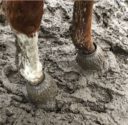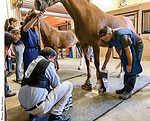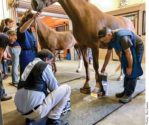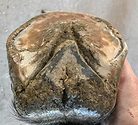Advertise Follow Us
Articles by Katie Navarra
Cornell University Farrier Steve Kraus explains the geometrical effects of trimming and shoeing
Read More
Hoof Moisture Content Plays a Major Role in Foot Quality
Shorter trimming intervals, moisture barriers and proper supplementation can aid farriers in regulating hoof moisture
Read More
Joint Practitioner Educational Clinics: Win-Win for Clients and Their Horses
Case discussion builds camaraderie and helps reinforce professional boundaries
Read More
Using Clips as Needed, Not as Trends Dictate, Will Enable Farriers to Improve a Horse’s Hoof-Health and Performance
Hoof proportion, digital alignment and capsule health should all be considered before deciding whether to use clips and which kind
Read More
Insurance Provides Farriers Stability When the Unexpected Happens
Alleviate the financial burden of a potentially bankrupting event
Read More
Use Caution When Working on Sedated Horses
Chemical restraints help relax horses and dull pain, but can pose a significant risk for farriers
Read More
Strategies to Manage Thin-Soled Horses
Thin soles can occur for a number of reasons, but a good management plan can help these horses remain active and comfortable
Read More
















